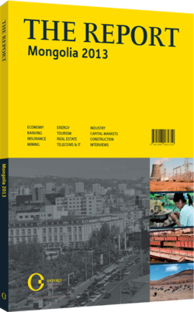Trends and ideologies: The eclectic political arena is faced with a variety of challenges
Since the dawn of democratic Mongolia back in 1989-90, much has changed internally, as the country has sought to negotiate the new, post-Cold-War epoch. This has involved not only embracing new ideas, but also a revised orientation towards neighbours and the wider international community in an era of rapid globalisation. This process has faced various strains, as the events of 2012 clearly demonstrated. The country is having to balance the requirements of economic development and national sensitivities, with a proud history of independence facing global economic integration.
PARTY POLITICS: Since 1990, the political landscape in Mongolia has been dominated by two major groupings: the broadly centre-left Mongolian People’s Party (MPP)/Mongolian Revolutionary People’s Party (MPRP) and the generally centre-right Mongolian Democratic Union/Mongolian Democratic Party (MDU/MDP).
In fact, October 2012 saw the registration of the country’s 22nd political party, testimony to a recent surge in smaller groupings. Until changes to the electoral system, after the 2008 elections brought in a part-proportionate block vote system, the previous system of first-past-the-post had been trimming the number of parties – only 12 competed in 2008. The rise reflects the new voting system, which has boosted the chances of smaller groups gaining representation.
SPLITS: The MPP, which began life as a Soviet-style communist party, ruling in a one-party state from 1921, has largely transformed its ideology since 1990 and is now broadly supportive of a free market and foreign investment. The party split in 2010, however, into the MPRP, led by N. Enkhbayar, and the MPP – chaired by U. Enkhtuvshin since the July 2012, 6th Party Congress, following the MPP’s electoral defeat.
The MPRP, meanwhile, went into coalition with the MDP after th e 2012 elections, illustrating an initial greater willingness to work with a centre-right agenda – although the MPRP’s withdrawal from the coalition following Enkhbayar’s jailing on corruption charges demonstrates too the level of mistrust and assumption of political interference in the judicial system that even senior political groupings possess.
ONE STEP FORWARD: The two major party affiliations have dominated the government and presidency since 1990. Yet despite apparent commitment to the free market by both sides, Mongolian politics initially saw only very gradual moves toward a free-market agenda. Analysts have ascribed this to several causes.
First, used to decades of power and control over a nationalised economy, the MPP/MPRP maintained its dominance after 1990, benefitting from the existing, nationwide party infrastructure capable of mobilising for elections. On the other hand, other more pro-reform parties such as the MDU/MDP, had to begin their networks largely from scratch, a distinct disadvantage in early years. At the same time, Mongolia lacks a tradition of democratic, participatory governance and business entrepreneurship. The growth of a middle class that might form new political groupings to press for economic reform has also been slow. A report as late as 2012 by the UN special rapporteur on poverty noted that income gaps remain highly pronounced, with consumption by the top 10% of the population 7.7 times higher than that of the lowest 10%.
The lack of traction for liberal market ideas amongst many Mongolians is also reflected in the strength of economic nationalism, a force that in 2012 caused great uncertainty amongst foreign and domestic investors. This was largely due the Strategic Investment Law, which requires foreign investment of over $75m in areas such as mining and transport to be approved first by parliament. While this was largely aimed at reducing dependency on Beijing, it has also caused alarm elsewhere. Coming after uncertainties around political demands for renegotiation of agreements on important mining assets, this law caused a significant decrease in foreign direct investment, down 44% in September 2012 over September 2011. In December 2012 moves were under way to revise the investment law to increase the lower limit on projects to $850m.
You have reached the limit of premium articles you can view for free.
Choose from the options below to purchase print or digital editions of our Reports. You can also purchase a website subscription giving you unlimited access to all of our Reports online for 12 months.
If you have already purchased this Report or have a website subscription, please login to continue.

